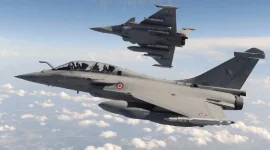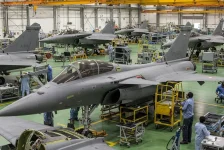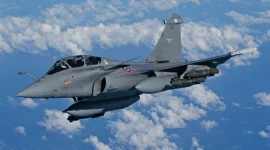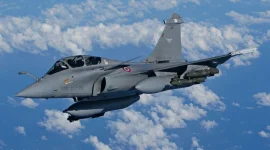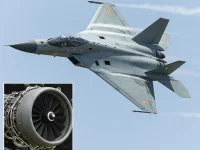- Views: 6K
- Replies: 48
The Indian Air Force (IAF) is at a strategic crossroads as it evaluates the most effective path to modernise its fighter jet fleet and maintain air superiority in a complex geopolitical landscape, highlighted by recent regional tensions during events such as the reported 'Operation Sindoor' in May 2025.
While acquiring more French-made Dassault Rafale jets is one option, a compelling and potentially more cost-effective alternative is gaining traction: a large-scale upgrade of its existing Sukhoi Su-30MKI fleet.
A proposal is being considered to significantly expand the IAF's current "Super-30" upgrade plan.
The initial program, approved in 2023 for ₹19,000 crore, involves modernising 84 Su-30MKI aircraft. The new, more ambitious plan would see at least 200 of the IAF's 260 Su-30MKI jets outfitted with the powerful AL-31F 177S engine and the state-of-the-art indigenous Virupaksha AESA radar.
This extensive modernisation could transform the backbone of the IAF into a near-fifth-generation fighting force, aligning with India's national self-reliance goals in defence manufacturing.
At the heart of the proposed upgrade is the Saturn AL-31F Series 3 (177S) engine, a significantly improved version of the Su-30MKI's current power plant. This advanced engine delivers 14.5 tons of thrust, a 15% increase over the 12.5 tons from the existing AL-31FP engine.
This additional power enhances the aircraft's supercruise ability, allowing it to maintain supersonic speeds without the heavy fuel consumption of afterburners.
Furthermore, the 177S engine boasts a longer service life of 4,000 hours and improved reliability, which is crucial for operations in challenging high-altitude terrains like Ladakh and for reducing long-term maintenance costs.
The second crucial component of the upgrade is the domestically developed Virupaksha Active Electronically Scanned Array (AESA) radar.
Designed by the Defence Research and Development Organisation (DRDO), this system represents a major technological leap over the Su-30MKI's current N011M Bars passive radar.
The Virupaksha radar can detect fighter-sized targets from a greater distance of approximately 250–300 kilometres and can simultaneously track up to 40 targets. Its Gallium Nitride (GaN) technology provides superior resistance to electronic jamming, a critical capability in modern warfare scenarios.
The financial case for the upgrade is highly persuasive.
Equipping 200 Su-30MKI fighters with new 177S engines is estimated to cost between ₹20,000 and ₹25,000 crore. In contrast, acquiring 36 additional Rafale jets would likely cost upwards of ₹90,000 crore, based on the 2016 agreement.
This means the IAF could modernise a fleet of 200 fighters for approximately one-third of the cost of acquiring 36 new Rafales. Such a move would also help address the IAF's declining squadron numbers, bringing it closer to the sanctioned strength of 42 squadrons from its current level of around 31.
While the Dassault Rafale possesses superior features in stealth and its integrated electronic warfare suite, a modernised Su-30MKI presents a formidable package.
The upgraded Su-30MKI would significantly close the technological gap, offering a larger payload capacity, a longer combat radius, and the advantage of a two-person crew for complex strike and air-to-air missions.
By integrating advanced indigenous systems like the Astra series of missiles and the BrahMos-NG, the upgraded fleet would provide a potent combination of numbers, performance, and strategic value, offering India a practical path to securing its skies.

